Liferay vs OpenCMS
June 12, 2023 | Author: Sandeep Sharma
7
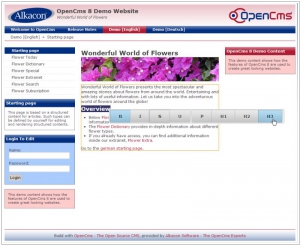
OpenCms is open source content management system (CMS) based on Java and XML for public internet website, extranet or intranet. OpenCms helps content managers worldwide to create and maintain beautiful websites fast and efficiently. The fully browser based user interface features configurable editors for structured content with well defined fields. A sophisticated template engine enforces a site-wide corporate layout and W3C standard compliance for all content.
Liferay and OpenCMS are both popular content management systems (CMS) used for building websites and managing digital content, but they differ in their approach and key features. Liferay is an open-source enterprise CMS that focuses on providing a comprehensive platform for building complex websites and intranets. It offers a wide range of features including content management, collaboration tools, personalization, and integration capabilities. Liferay is highly customizable and scalable, making it suitable for large organizations and complex projects. On the other hand, OpenCMS is an open-source Java-based CMS that emphasizes simplicity and ease of use. It offers a user-friendly interface and intuitive content editing tools, making it accessible for users with limited technical knowledge. OpenCMS is well-suited for smaller websites and projects that require straightforward content management functionality.
See also: Top 10 Website CMS systems
See also: Top 10 Website CMS systems
Liferay vs OpenCMS in our news:
2016. Liferay launched Digital Experience Platform
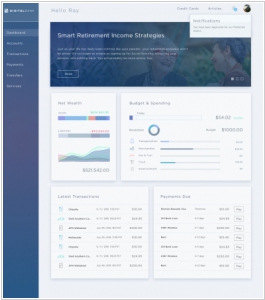
The Open source enterprise CMS provider, Liferay, has introduced its Digital Experience Platform (DXP). This platform is specifically designed to assist companies in creating and managing experiences that facilitate the entire customer relationship. It offers a comprehensive customer view that goes beyond marketing by integrating sales, marketing, support, and service teams. With DXP, companies can develop highly personalized experiences by targeting valuable information, offers, and resources to specific user segments and individuals. It also enables the creation of a unified customer profile that consolidates all interactions and significant data points. Furthermore, DXP provides access to engagement data such as views on video content, click-through rates on targeted materials, community participation, and social metadata.
2016. Liferay launches Digital Experience platform
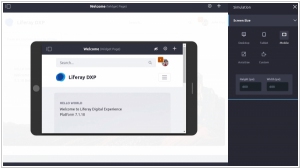
Historically recognized as portal software, Liferay has now ventured into the digital experience market with its latest offering, the DXP (Digital Experience Platform). This strategic shift represents a natural evolution for Liferay rather than a complete departure from its previous trajectory. As stated by Bryan Cheung, the CEO of Liferay, their customers consistently expressed a need for functionalities that went beyond the scope of traditional portal implementations. In response, Liferay would develop or integrate those features, prompting a reevaluation of their position in the market. The Liferay DXP consists of various components, with the portal platform serving as its foundation. The platform includes seamless integrations with numerous backend systems, including CRM, ERP, support, and others. This infrastructure empowers customers to create a wide range of customer experience solutions spanning web experiences, mobile experiences, and even hybrid online/offline experiences throughout the entire customer lifecycle. Please note that while the HTML tags and links were retained, they may not be properly rendered in this plain text format.
2015. Liferay partners with Red Hat to provide an open source portal solution
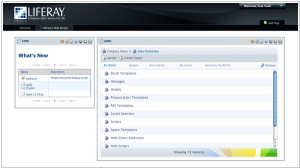
Liferay and Red Hat have joined forces to collaborate on an open-source portal that combines the capabilities of Liferay Portal and Red Hat JBoss Enterprise Application Platform (JBoss EAP). This product specifically targets companies seeking open-source options with enterprise-grade portal solutions. The collaboration also hints at the possibility of integrating with other Red Hat JBoss Middleware products in the future. From a business standpoint, this partnership is intriguing as Red Hat ceased offering new subscriptions to JBoss Portal in February 2015. However, Red Hat will continue to provide support for JBoss Portal until the scheduled end of the current release stream in March 2018. This new venture exemplifies Red Hat's ongoing commitment to the portal market, showcasing their dedication to serving customers in this domain.
2012. Open Text and Liferay create Dropbox clones
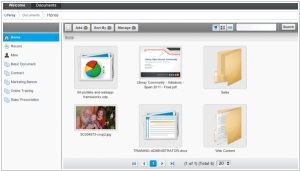
Could you have imagined just a few years ago that esteemed enterprise vendors like Open Text and Liferay, known for developing sophisticated enterprise content management systems (ECM), would emulate a seemingly straightforward consumer service like Dropbox? Surprisingly, it has become a reality. Even within large corporations that heavily rely on ECM, employees are ordinary individuals who desire a seamless working experience. They too seek systems that facilitate their work instead of hindering it, and many of them resort to using Dropbox despite IT administrators prohibiting its usage. As a result, a single solution emerges: to create a similar user-friendly service that abides by the corporate firewall. This very concept underlies the introduction of the new services: Open Text Tempo and Liferay Sync. These services enable file synchronization between desktop folders, web accounts, tablets, and smartphones, facilitating quick file sharing among colleagues while ensuring the files are stored securely on corporate servers. It's that simple.



